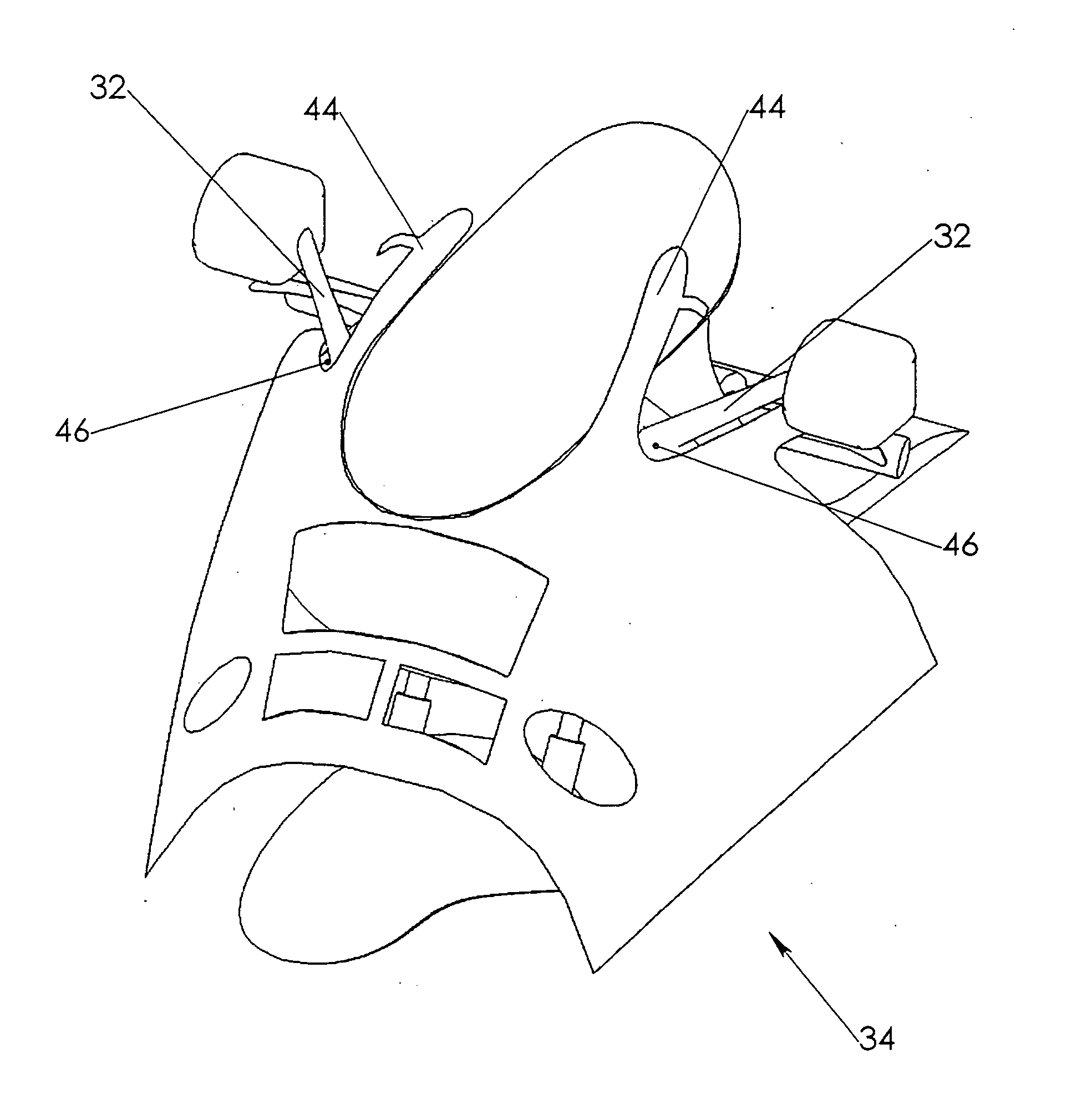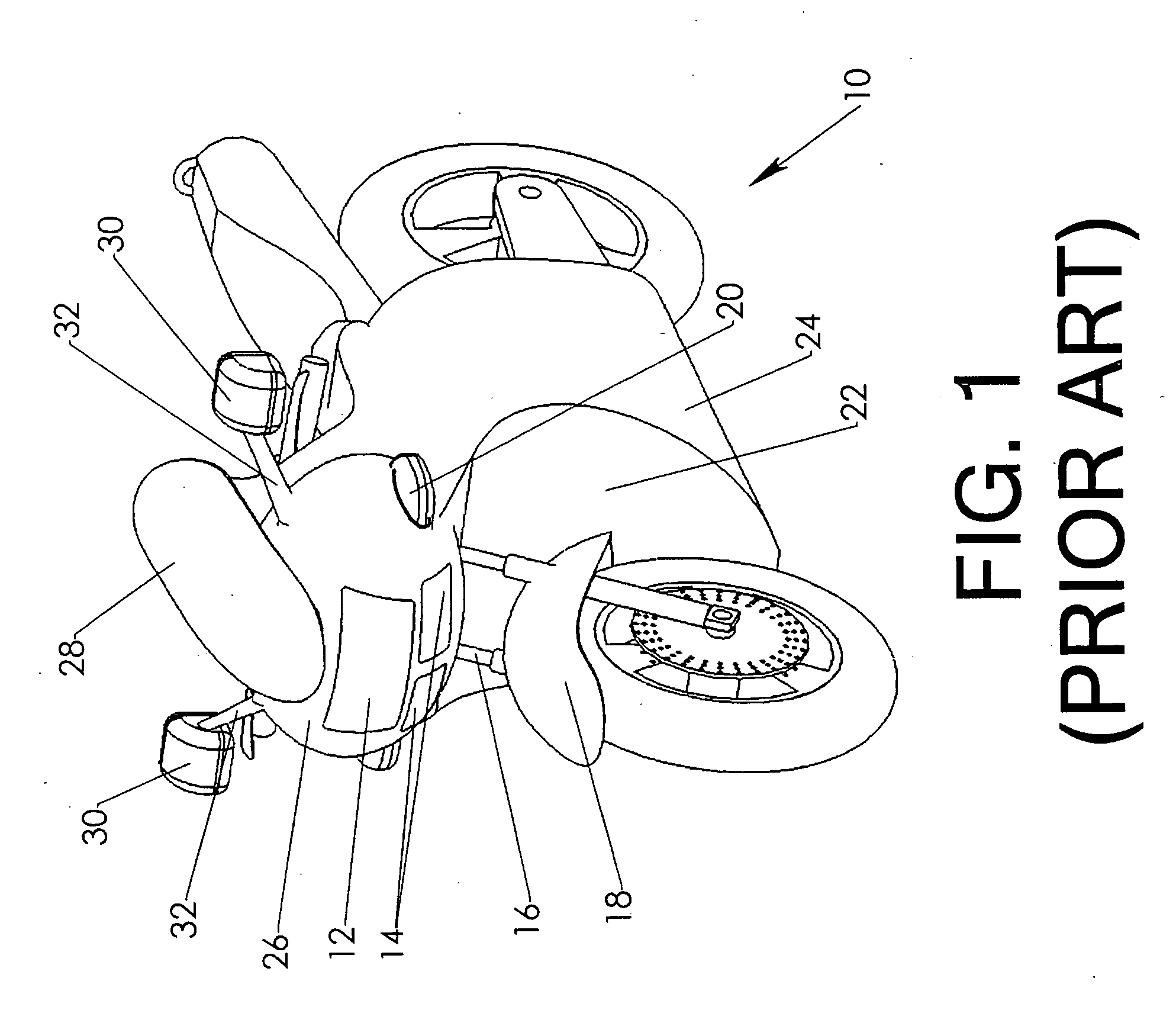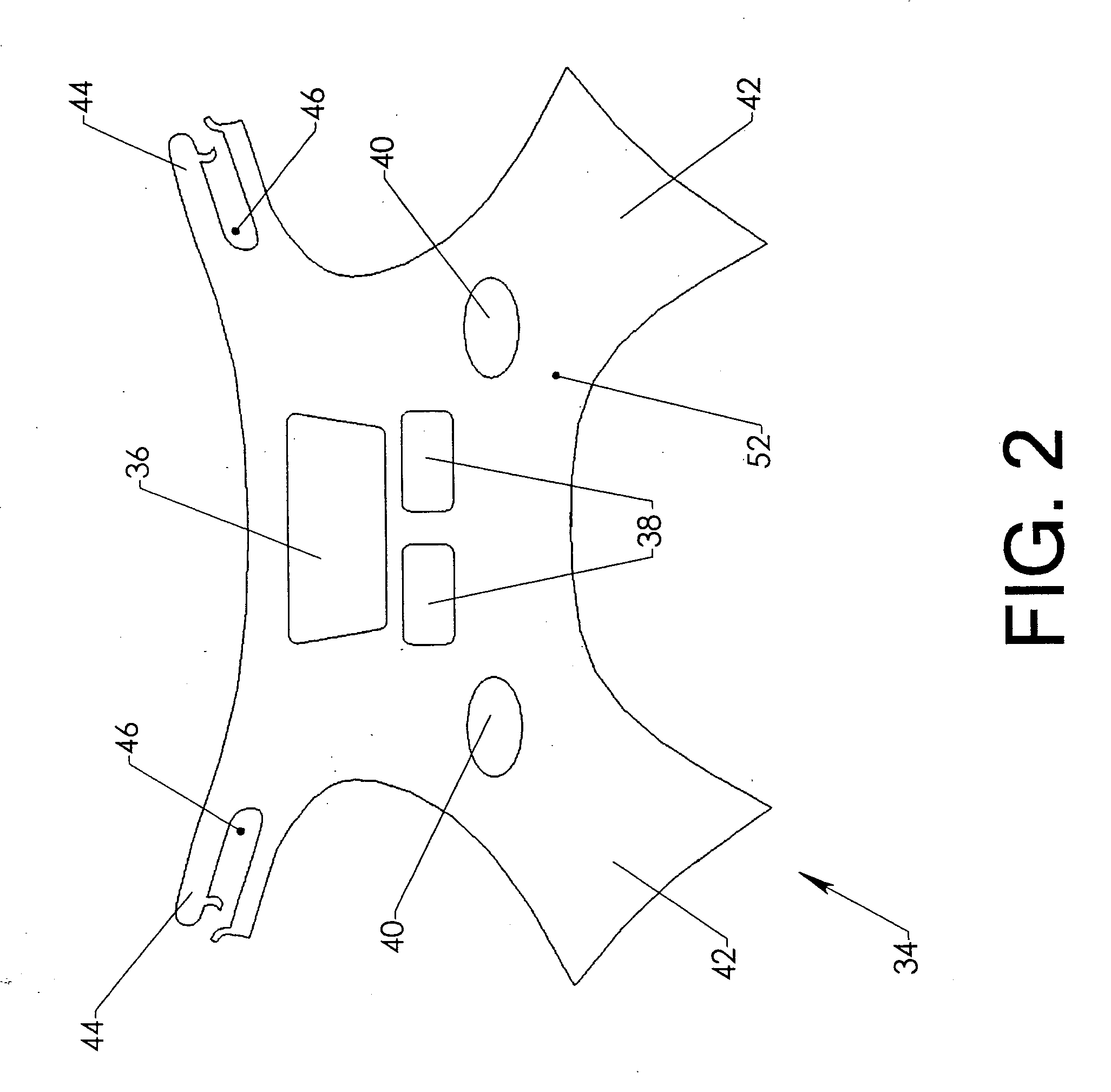Motorcycle protective cover
- Summary
- Abstract
- Description
- Claims
- Application Information
AI Technical Summary
Problems solved by technology
Method used
Image
Examples
Embodiment Construction
[0026]FIG. 2 shows the present invention laid out in a flattened state. Cowling cover 34 consists primarily of central portion 84 and two attached side flaps 42. The view shows the outward facing side of the device, denoted as outer surface 52. Two turn signal openings 40 are provided near where central portion 84 joins the two side flaps 42.
[0027] Central portion 84 also includes a pair of air intakes 38 and headlight opening 36. Two stalk slots 46 are located near the upper corners of central portion 38. Each stalk slot 46 is bounded by an upper tab 44. FIG. 3 shows a stalk slot 46 in more detail. Loop tab 50 and hook tab 48 are located near the open mouth of stalk slot 46. These hook and loop fasteners (commonly known as VELCRO) can selectively close the open mouth of stalk slot 46. Those skilled in the art will also know that they provide considerable adjustment, the purpose of which will be explained subsequently.
[0028]FIG. 4 shows cowling cover 34 flipped over to reveal inne...
PUM
 Login to View More
Login to View More Abstract
Description
Claims
Application Information
 Login to View More
Login to View More - R&D
- Intellectual Property
- Life Sciences
- Materials
- Tech Scout
- Unparalleled Data Quality
- Higher Quality Content
- 60% Fewer Hallucinations
Browse by: Latest US Patents, China's latest patents, Technical Efficacy Thesaurus, Application Domain, Technology Topic, Popular Technical Reports.
© 2025 PatSnap. All rights reserved.Legal|Privacy policy|Modern Slavery Act Transparency Statement|Sitemap|About US| Contact US: help@patsnap.com



